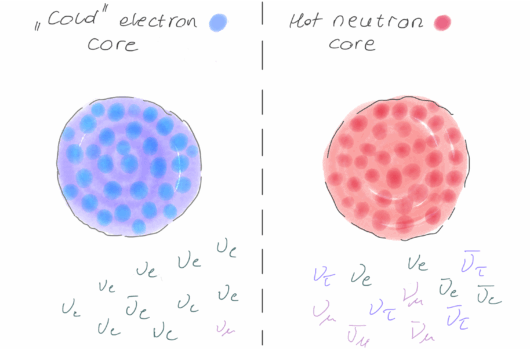Sensitivity of Carbon and Oxygen Yields to the Triple-Alpha Resonance in Massive Stars
Sensitivity of Carbon and Oxygen Yields to the Triple-Alpha Resonance in Massive Stars
View
Abstract
Motivated by the possible existence of other universes, this paper considers the evolution of massive stars with different values for the fundamental constants. We focus on variations in the triple alpha resonance energy and study its effects on the resulting abundances of ![]() C,
C, ![]() O, and larger nuclei. In our universe, the
O, and larger nuclei. In our universe, the ![]() energy level of carbon supports a resonant nuclear reaction that dominates carbon synthesis in stellar cores and accounts for the observed cosmic abundances. Here we define
energy level of carbon supports a resonant nuclear reaction that dominates carbon synthesis in stellar cores and accounts for the observed cosmic abundances. Here we define ![]() to be the change in this resonant energy level, and show how different values affect the cosmic abundances of the intermediate alpha elements. Using the state of the art computational package
to be the change in this resonant energy level, and show how different values affect the cosmic abundances of the intermediate alpha elements. Using the state of the art computational package ![]() , we carry out stellar evolution calculations for massive stars in the range
, we carry out stellar evolution calculations for massive stars in the range ![]() =
= ![]() , and for a wide range of resonance energies. We also include both solar and low metallicity initial conditions. For negative
, and for a wide range of resonance energies. We also include both solar and low metallicity initial conditions. For negative ![]() , carbon yields are increased relative to standard stellar models, and such universes remain viable as long as the production of carbon nuclei remains energetically favorable, and stars remain stable, down to
, carbon yields are increased relative to standard stellar models, and such universes remain viable as long as the production of carbon nuclei remains energetically favorable, and stars remain stable, down to ![]() keV. For positive
keV. For positive ![]() , carbon yields decrease, but significant abundances can be produced for resonance energy increments up to
, carbon yields decrease, but significant abundances can be produced for resonance energy increments up to ![]() keV. Oxygen yields tend to be anti-correlated with those of carbon, and the allowed range in
keV. Oxygen yields tend to be anti-correlated with those of carbon, and the allowed range in ![]() is somewhat smaller. We also present yields for neon, magnesium, and silicon. With updated stellar evolution models and a more comprehensive survey of parameter space, these results indicate that the range of viable universes is larger than suggested by earlier studies.
is somewhat smaller. We also present yields for neon, magnesium, and silicon. With updated stellar evolution models and a more comprehensive survey of parameter space, these results indicate that the range of viable universes is larger than suggested by earlier studies.




